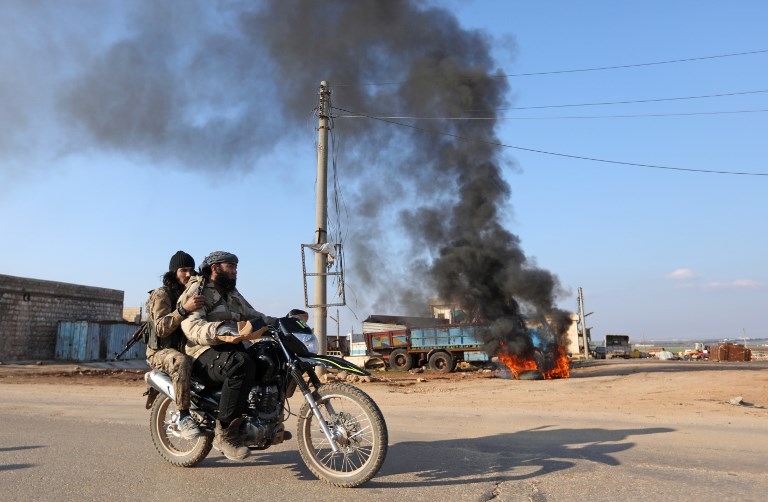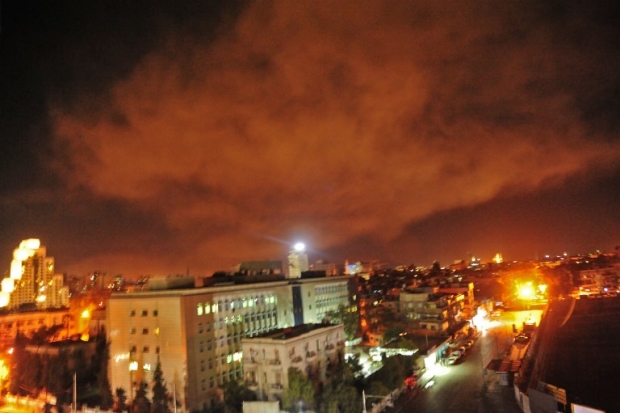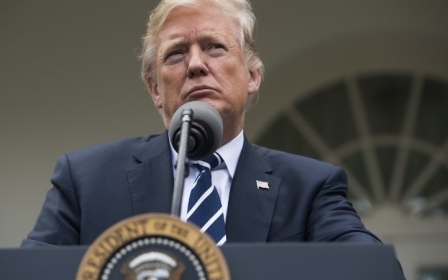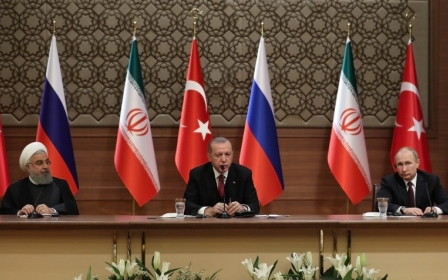Why an Arab stabilisation force in Syria won’t work

A clear, definable US policy towards Syria has finally emerged out of the fog of contradictory tweets and public declarations of policy by US President Donald Trump.
In the aftermath of a limited, targeted and apparently ineffectual attack against Syrian chemical weapons installations, the Trump administration has sought to organise an Arab stabilisation force in the country's northeast, in areas formerly held by the Islamic State (IS), to replace the US military presence.
To the disappointment of many supporters of more sustained US intervention in Syria, including new National Security Advisor John Bolton, the attacks highlighted the self-imposed limits of US policy in Syria. The proposal for a stabilisation force further confirms the long-term US strategy of disengagement, rather than deeper entrenchment.
A battle for influence
The attempts by the Trump administration to create an Arab-led stabilisation and restoration force consisting of Egypt, Qatar, Saudi Arabia and the United Arab Emirates is part of this larger strategy. The plan assumes a US military retreat, with the vacuum being filled by Arab allied forces working with local authorities and fighters to prevent the revival of IS.
Global mercenary czar Erik Prince has been pushing a version of this plan involving private military contractors. The central problem US officials seem to be trying to solve today is how to maintain influence in the northeast without an actual military presence.
A continued US military commitment would be needed to protect the stabilisation force from Syria’s subjugating forces, all of which are opposed to plans for the stabilisation force
Egypt has already rejected the inclusion of its military in any such stabilisation force. Saudi forces are currently waging a destructive war against a defenceless Yemeni population. Qatar and the UAE are the unlikeliest of military allies in a moment of regional posturing and discord. Each country’s military also has no experience in stabilisation and counterinsurgency and, absent a mandate from an authorising body such as the United Nations, would certainly be treated as occupiers.
Most regional states have started to de-escalate their involvement in Syria, and any troop deployment into the country would be a reversal of existing policy. The Syrian regime is also unlikely to tolerate the presence of Arab troops inside Syria the way it has the US military, and confrontation between the stabilisation force and Syrian-allied fighters would be extremely likely.
Potential Saudi troop deployment
Despite all of these problems, the proposal is being taken seriously within the region. Saudi Arabia declared that it was in discussions with the United States to send troops to Syria. The Saudi offer to send troops is a long-standing one, but if followed through with now, it would likely be isolated from a regional consensus.
Should Saudi Arabia be the lone, or even lead, state sending troops into Syria, it would be placing its military in direct confrontation with local Kurdish-led troops in the Syrian Democratic Forces (SDF) and other aligned militias, battle-hardened and likely hostile to the presence of foreign troops.
This is perhaps the central problem facing the stabilisation plan. Direct confrontations between the SDF and regime-aligned forces would certainly ensue if foreign troops, especially from Arab states that so actively fuelled the violence in Syria, were present in Syria.
Will Saudi Arabia simply fill the American vacuum and continue to provide the same military support for local fighters?
The honest answer is that any non-American, Arab-led force will be viewed as an occupying power and treated as such. The stabilisation force would also be outside of the tripartite consensus on Syria established through the Astana and Sochi peace processes, led by Russia, Iran and Turkey, and would be created outside of this regional consensus.
A continued US military commitment would be needed to protect the stabilisation force from those aligned with the intervening powers, all of which are opposed to plans for the stabilisation force.
US appetite for disengagement
In other words, while the stabilisation force may appease the US appetite for disengagement, it would represent an escalation of the conflict by introducing a Saudi military presence outside of the tripartite consensus currently shaping Syria's future.
The indeterminate presence of Saudi forces outside of any regional or international mandate would not support military de-escalation, but rather have the reverse effect.
No matter how politically or militarily impractical, the US will continue to push for such a stabilisation force because its singular goal in Syria today appears to be some sort of contained disengagement. The Trump administration has fallen into a trap of its own making, just as previous administrations fell into traps in Iraq and Afghanistan.
Any military withdrawal would open up the landscape for new or old armed groups, like Islamic State, to emerge once again.
These imperial apprehensions to keep a foothold in Syria are taken seriously within the US security establishment. Because of this, we can expect that US policy will continue to be driven by the desire to disengage, and to do so by creating and supporting some sort of stabilisation force, whether led by Saudi Arabia or Erik Prince’s mercenaries.
- Samer Abboud is an Associate Professor of International Studies at Arcadia University and the author of Syria (Polity). He is currently a Visiting Scholar at Villanova University’s Centre for Arab and Islamic Studies.
The views expressed in this article belong to the author and do not necessarily reflect the editorial policy of Middle East Eye.
Photo: Syrian rebel fighters ride past burning tyres in the Syrian city of Saraqib, southwest of Aleppo, on 1 February 2018 (AFP)
This article is available in French on Middle East Eye French edition.
Middle East Eye propose une couverture et une analyse indépendantes et incomparables du Moyen-Orient, de l’Afrique du Nord et d’autres régions du monde. Pour en savoir plus sur la reprise de ce contenu et les frais qui s’appliquent, veuillez remplir ce formulaire [en anglais]. Pour en savoir plus sur MEE, cliquez ici [en anglais].






